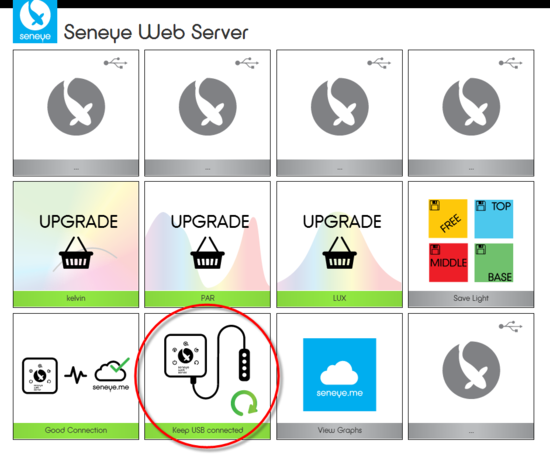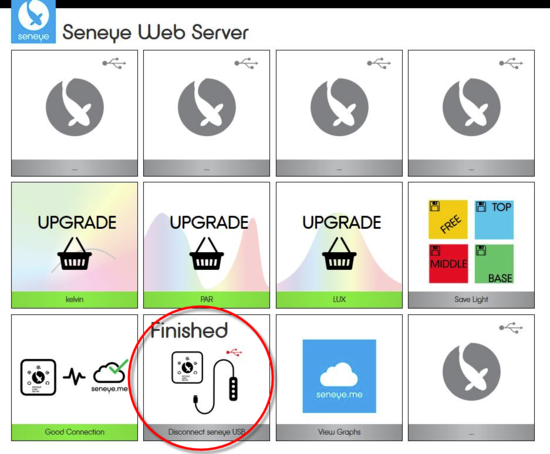SWS (Seneye Web Server) Instructions (English)
!Page currently under construction!
DO NOT PLUG IN OR TURN ON YOUR SWS BEFORE READING THIS
Thank you for purchasing a seneye web server. Please read the following instructions carfully in order get your SWS working.
Stage 1 - Registering an account on seneye.me
If you have not already done so, pleas register an account at www.seneye.me. You will need to use the E-mail address that you want your alerts sent too.
Once you have done this, please ignore any details on the Welcome E-mail that mentions downloading the seneye connect application. This is not needed as everything will be done using your SWS. Once your registration is complete, please continue through these instructions.
Stage 2 - Registering the SWS to your account
If you are a current seneye user and have a seneye usb device (SUD) registered to your account please ignore this step as the SWS will automatically link to your account. Please proceed to Stage 3 of the instructions
Please go to the following link to register your SWS to your account.
You will be asked for your E-mail address, password, and the details that are on the sticker on the SWS packaging. An example of this is shown below:
Stage 3 - Connecting the SWS to your Local Area Network
An overview of the lights and connections on the SWS can be seen below. You will need to reference these later in the setup.
In order to connect the SWS to your LAN, the following ports need connecting in the order described below.
At this stage it is very important not to connect your seneye device.
If you are using an WiFi or Ethernet Over Power (EOP) addaptor, we suggest that you setup your SWS first by following the instructions below, and then setup the addaptor after.
A. CONNECT ETHERNET
1. Connect the Ethernet cable supplied directly to your router.
2. Connect the Ethernet cable to your SWS (purple port).
B. CONNECT POWER
1. Plug the USB power adaptor (supplied) into the mains.
2. Connect the micro USB cable (supplied) into USB power supply.
3. Connect the micro USB cable into the Micro USB port (black port).
Your SWS will then boot up:
When you SWS boots, the lights on the front will flash in the following sequence:
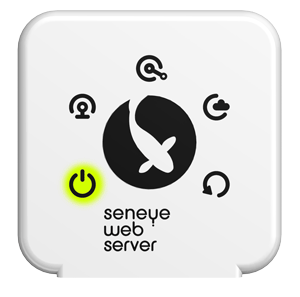
If a firmware update for the SWS is avalaible then it will start to download it automatically. The following light sequence will be shown.
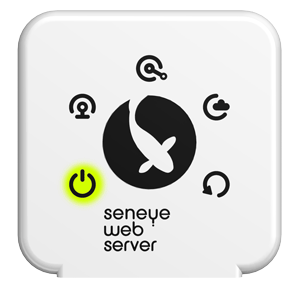
Once downloaded it will show this light sequence while updating.
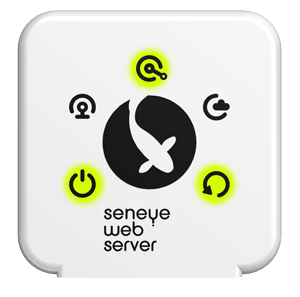
Please make sure that power and data lines are kept connected during this period. After an update it will return to the status shown in the image shown at the top of this section. You may occassionally see the SWS do this its self automatically.
Stage Four - Find the SWS Graphic User Interface
The SWS has a Graphical User Interface (GUI) that will allow you to view data and interact with your SWS on your LAN. You can access this by using an HTML5 web browser using any device on the same network. EG, a PC or tablet that is connected to the same router by Wi-Fi
To find your SWS please open up a browser on a device that is on your local network. Tthe following address needs to be entered the URL bar at the top of the browser. The URL is unique so your SWS and the part that is marked with **** on the address below needs to be replaced with the code that was on the label on the front of your SWS.
An example is given below
If you cannot find your SWS gui, then please contact us at [email protected]
Stage 5 - Using the SWS GUI
Once you have found the SWS you will find a page like that below. It will provide you with information like you see on the current SCA. The page is dynamic so you can move the tiles. It will also resize to any device screen size.
Your SWS is now working and you found it don't forget to book mark it on your browser.
Stage Five - Updating your Seneye USB device.
From the SWS interface you can update your seneye USB device (SUD).
You now need to connection your SUD in to the USB port on your SWS (blue port)
Once the SWS has detected that the firmware is out of date, it will start to download the latest version.
The tile that is circled below will indicate that the firmware is downloading.
Do not disconnect your SUD untill the tile show the image below:
Once you have reconnected the SUD the top tiles (shown in grey) will change to information graphics and the front lights on the SUD will illumiate.
Your SUD firmware should be upgrade now and your SWS will be registered to your account. If you have any problems, please E-mail us.
Once updated and if out of water all the red lights will flash on your SUD.
This is normal and the new warning state for out of water.

Your SWS and SUD should now be registered to your account.
Setting up a WiFi or Ethernet Over Power addator
Now that your SWS has been registered to your account you can set up any addaptors that you are using for the connection. If your SWS came with a WiFi addaptor, please refer to the instructions that were included as to how to set this up.
Unclipping your SWS.
Remove all cables from the SWS.
If you ever need to unclip your SWS you will find two push in clips on the sides of the SWS.
Once the top is removed you will be able to see the inside.
SWS LED LIGHT SEQUENCES
Downloading an update:
If your SWS is downloading an update for itself or for your seneye device, the lights will flash in the following sequence:

Do not unplug your SWS if the device if your device is in this mode. When the update is complete, the light sequence will stop automatically.
Updating Firmware:
Your SWS will automatically update its own firmware if a newer version is avalible. If this happening then the lights will flash in the following sequence:

Do not unplug your SWS if the device if your device is in this mode. When the update is complete, the light sequence will stop automatically.
Bootload mode:
If your SWS shows the following lights on permanatly then it is in boot load mode.
This is highly unlikely, but easily rectified if you contact us.
If you see the sequence below then the device has no code and is bootload mode.

It is very unlikely you will ever see this however if it does happen please let us know.
SUD LED LIGHT SEQUENCES
Taking reading or communicating (power on).

Reading taken and alert switching on (temperature - all behave the same).
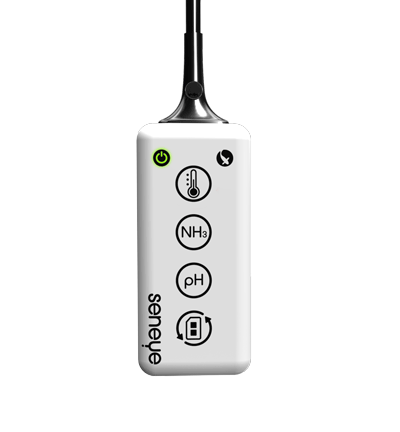
Alert on for temperature and a reading being taken.

Out of water!

Seneye Dri
If you are keeping your seneye outside or in a very wet area then we would recommend placing all the connections in a seneye Dri. Water or high humidity will damage your SWS.
